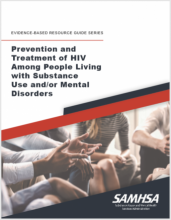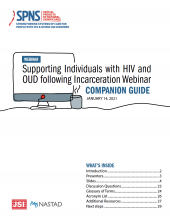
This tool focuses on the role of stigma at the intersection of HIV and OUD systems, and introduces opportunities for intervention at the systems level.



This tool focuses on the role of stigma at the intersection of HIV and OUD systems, and introduces opportunities for intervention at the systems level.
This ready-to-use training package is designed to provide HIV providers (including physicians, dentists, nurses, therapists, social workers, counselors, specialists, and case managers) with an overview of the challenges and strategies for change in working with
In Los Angeles, New York, Houston, Philadelphia, and Washington, D.C., a National Institutes of Health funded clinical trial, known as INTEGRA, is evaluating the efficacy of delivering integrated HIV and substance use disorder care via mobile clinics.
Transgender people and communities, including nonbinary people, have specific needs within harm reduction programs.
This month’s Connecting Care episode discusses the impact of structural racism at the intersection of HIV and OUD care and opportunities to think outside of the box to effect change.
This glossary includes terms describing key concepts and components of the HIV and opioid use disorder (OUD) care and treatment systems.
In May, the New England AIDS Education Training Center (NEAETC) published a set of pages dedicated to providing information about and resources for HIV and HIV-related topics.
This document provides a quick overview of the federal discretionary funding programs that support essential aspects of the nation’s HIV response.
For Boston Health Care for the Homeless nurse Megan Sonderegger, providing client-centered care means literally meeting her clients where they are.
In recent years, the gap in the rate of opioid overdoses among Black and white Americans has narrowed significantly, with increases in Black mortality driven in part by the addition of synthetic opioids to other drugs.